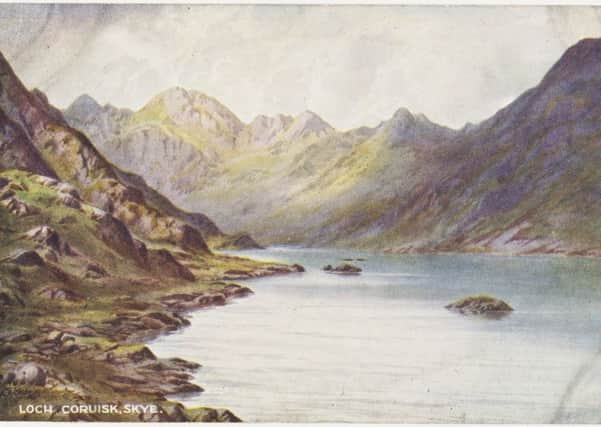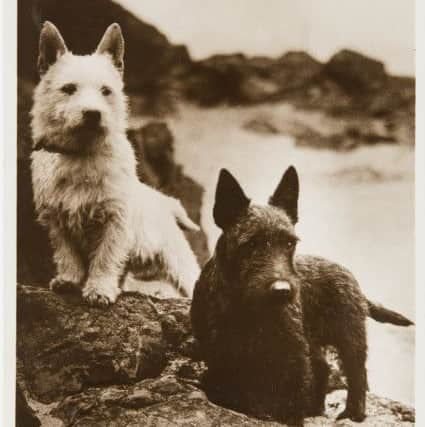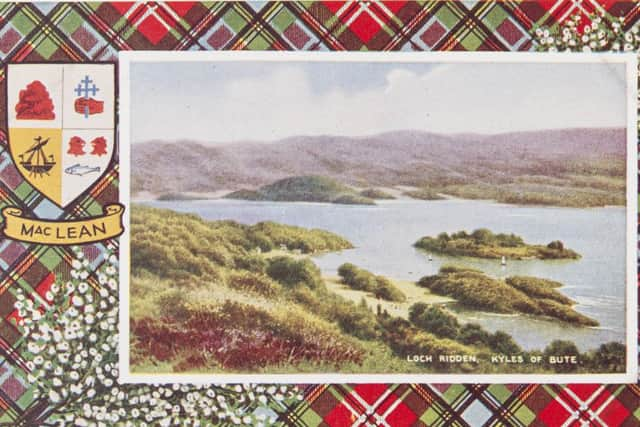Scotland's postcards of the past
This article contains affiliate links. We may earn a small commission on items purchased through this article, but that does not affect our editorial judgement.


J Valentine of Dundee became one of the biggest names in the postcard industry during the 19th and early 20th Century with legions of photographers dispatched across the country during the spring to capture its finest scenes and sent to the dark rooms in winter to process their images.
The company started off as a printer of business stationery but by 1851 its founder, James Valentine, added portrait photography to its portfolio with the firm building one of the largest photographic glasshouses in Britain .
Advertisement
Hide AdAdvertisement
Hide AdIt was designed to keep warm those posing for photographs - whether they be in the dressing room or the studio – so “that portraits can be taken with comfort in all seasons and states of the weather.”


Landscape photography was to become the next major area of business with a growing demand for topographical views , particularly among the middle and upper class tourists of the day.
His work caught the eye of Queen Victoria and, Royal Warrant in hand, he was commissioned to take 40 Highland scenes for the monarch in 1868.
Buoyed in reputation, his ability was finessed in the studios of Francis Frith at Reigate - England’s foremost landscape photographer of the day.


Advertisement
Hide AdAdvertisement
Hide AdIn the 19th century, the Valentine views concentrated on the genteel tourist sights of Scotland with operations branching out to England in 1882 and then the most fashionable tourist spots overseas, including Jamaica, Madeira and Tangier.
Following the death of James in June 1879, his two sons, William and George took over the business.
It was George that forged ahead with the expansion, upping the workforce from 14 to 100.


His decision to enter the picture postcard market, however, was to increase the size of the firm tenfold.
Advertisement
Hide AdAdvertisement
Hide AdThousands of images were added to the archive every year with the firm employing 40 artists in the early 1900s to touch up and improve images. Fountains could be turned on or off at the brush of a pen and cute animals were added into scenes for added interest.
It was much later during the 1960s and 1970s that Valentine was to specialise in the ‘saucy’ postcards of the Sunshine Comic range, now a dated reminder of an era of mainstream, sexist humour.
The firm’s booming business first started to flounder in 1910 given a price war with German postcard publishers with WWI then severely impacting trade. The firm moved in to greetings cards during this period with this new enterprise to slowly erode investment in picture postcards.


Postcard publishing ceased at the company altogether in 1970. Valentine’s was sold to US-firm Hallmark cards 10 years later with the firm’s long association with Dundee coming to an end in 1994 when the doors closed on its greetings card factory in Kingsway West in 1994.
Advertisement
Hide AdAdvertisement
Hide AdThe company’s entire archive is held at the special collections division of St Andrews University library.
While the reduction and eventual cessation of photographic postcard publishing was
taking place, the family control of the firm was also slipping away. An association with
John Waddington & Co Ltd of Leeds began in 1960 and became a take-over in 1963. They
Advertisement
Hide AdAdvertisement
Hide Adin turn sold off Valentines to Hallmark Cards Inc. of the United States in 1980. On 28 October
1994 the long association of Valentines with the city of Dundee came to an end when the
factory of the greetings card company closed its doors for the last time. The company’s
headquarters had been transferred to Bath, manufacturing to near Dublin and distribution
Advertisement
Hide AdAdvertisement
Hide Adto Bradford, during a run-down of the facilities in Dundee which had stretched over more
than a year. It is therefore through the images themselves and their continuing story that
Valentines will remain forever ‘Famous throughout the World’.
DOWNLOAD THE SCOTSMAN APP ON ITUNES OR GOOGLE PLAY
